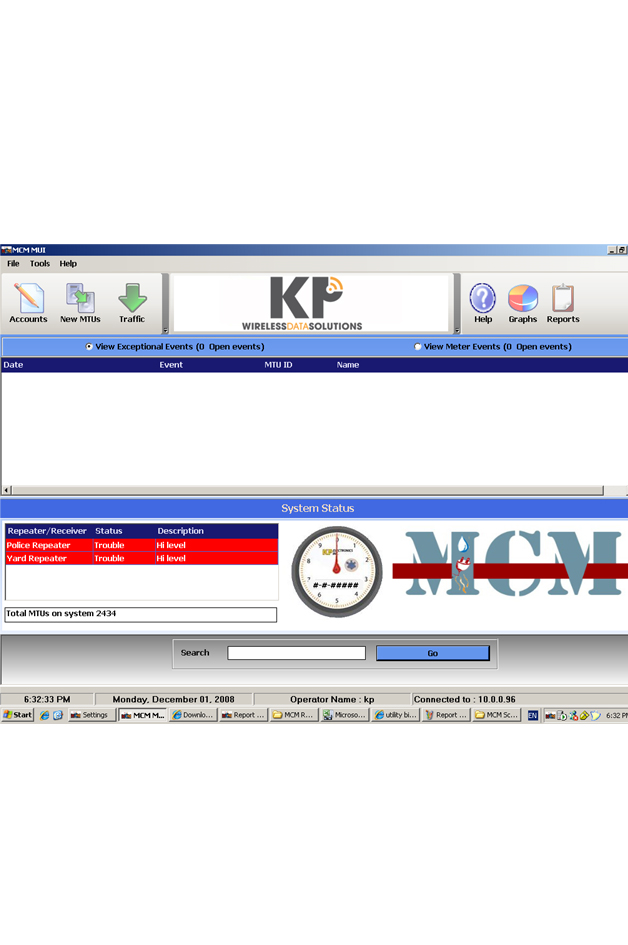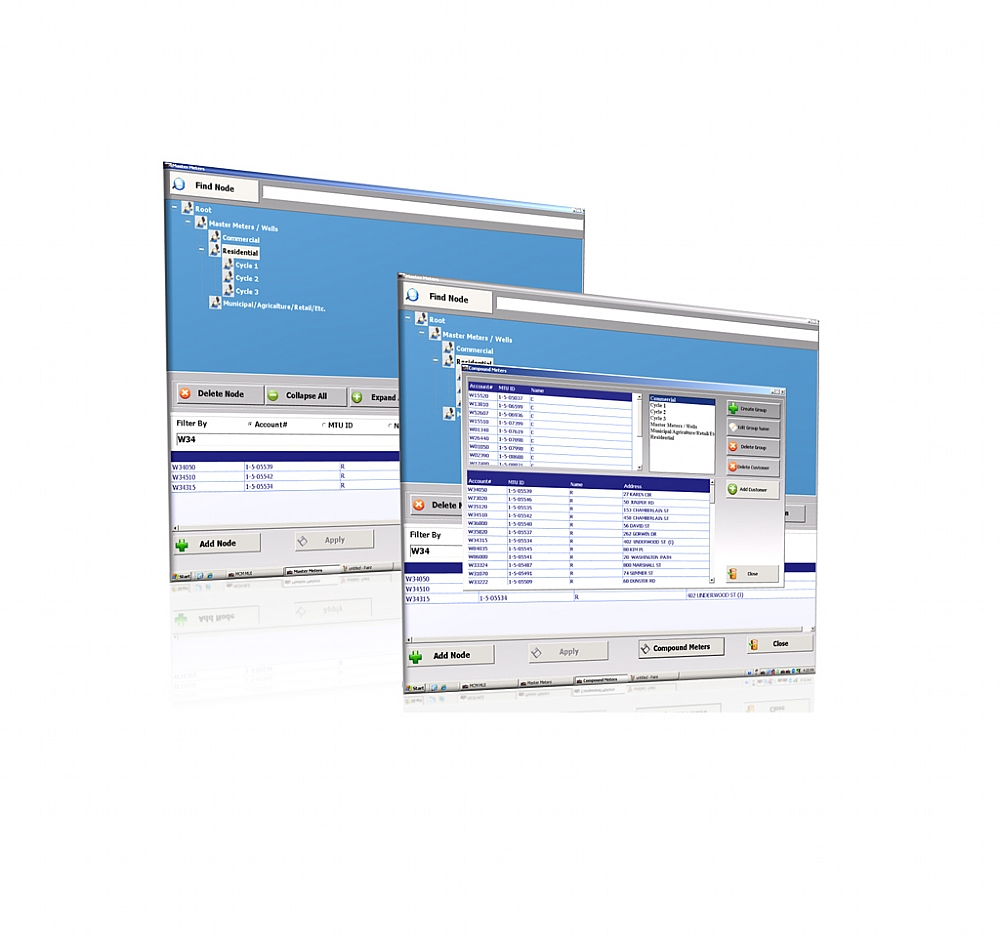MCM™
Meter Control Management
From the moment of transmission through to server acceptance and display, only milliseconds have transpired. The MCM software analyzes an incoming read and checks it against pre-set anomalies: High / Low / Zero / Reserve / Critical consumption – whatever was assigned to a specific account. If a read falls into all normal set boundaries, it simply becomes part of the incoming traffic and historical database. However, if there is any aspect of the read that is outside the preset parameters, the reading and account data are instantly presented on the event screen along with information of what triggered the event. All events are available for review and handling by a system operator.
Basic events that are available as default include critical consumption, reverse flow, usage on fire line, alarm, network components status, tamper, usage on vacant/inactive property, continuous flow, no flow, etc. Additional events can be defined as special codes for each individual account.
The MCM software has a built-in backup function that automatically backs up data. Frequency of back up, file storage locations and other functions are configurable by the user to meet any requirements. Historical data is available for retrieval for viewing or the creation of reports. The MCM system keeps five years of data by default, but this can be decreased or increased by the user.
The MCM software being a ”windows like design" architecture allows multiple operators to access the same screens, yet does not allow parallel entry or edits. It is important again to note the MegaNet system is a live"real time" system. Using wireless links end-to-end allows for extremely fast communication, delivering the transmitted data within seconds to the control center. Real-time data means that as soon as data is transmitted from the MTU, it is received by a Collector and almost immediately retransmitted to the control center. The owner can then efficiently collect data without delays or the complicated and expensive backhaul requirements related to other solutions. This allows for the ability to provide proactive customer service, where the owner has the ability, for example, to notify a customer if a leak occurs, spot unusual activity, identify theft of water, locate tampers, ensure integrity of water distribution infrastructure and fully support all water conservation efforts.
The reporting is based on Crystal Report™ software, and the SQL tables are available to use for tailor made applications by the owner, such as web viewing of accounts by the owner’s customers through their own web site or Mi.Data, an optional customer-facing web portal.
The MCM software allows segregation of the meters into an unlimited number of groups. With the effective planning and use of this feature, the owner can run reports comparing individual meters, groups, subgroups,etc., allowing for a high resolution picture of the metered system and the potential identification of problematic areas.
In today’s world, graphs are a key tool for documenting consumption history or trends. Visualization allows operators to quickly identify abnormal patterns, graphically compare different customers or groups of customers, convert units of measurement and even email a usage graph to a customer. The available breakdown of graphs is comprehensive and allows the owner to review a single meter or even the total meter population.
Flexible report generation allows sorting of data in the required order. Statistics are collected and displayed on reports relevant to consumption data, as well as the RF signal level history. All reports and graphs can be exported to Excel, Crystal Reports, PDF, Word, E-mail, etc. Further, all reports and graphs include flexible filters, allowing the operator to set conditions and sort by various fields. As the standard reports are Crystal Reports based, additional criteria can be set to view or modify and create custom requirements.
One final key advantage of the MegaNet system is that data is always stored on site and is in the sole control of the owner. No off site hosting is required; data belongs to owner and is in the owner’s full control at all times.
Product Categories
- Runs on new versions of Microsoft Windows® operating system, starting from
Microsoft Windows® 2000 Professional. - Communicates with Head-End Receiver through computer Serial port, USB port, or IP.
- Logs received signals to central database.
- Detects consumption problems and creates an alarm.
- Exports consumption reports.
- Generates file of consumption data for billing purpose.
- Works in a multi-user environment
- Works in multilingual environments
- Security and access levels
- Creates various reports and graphs
- Scalability from small systems with as little as several hundred meters to large municipal systems with up to 1 million accounts.




